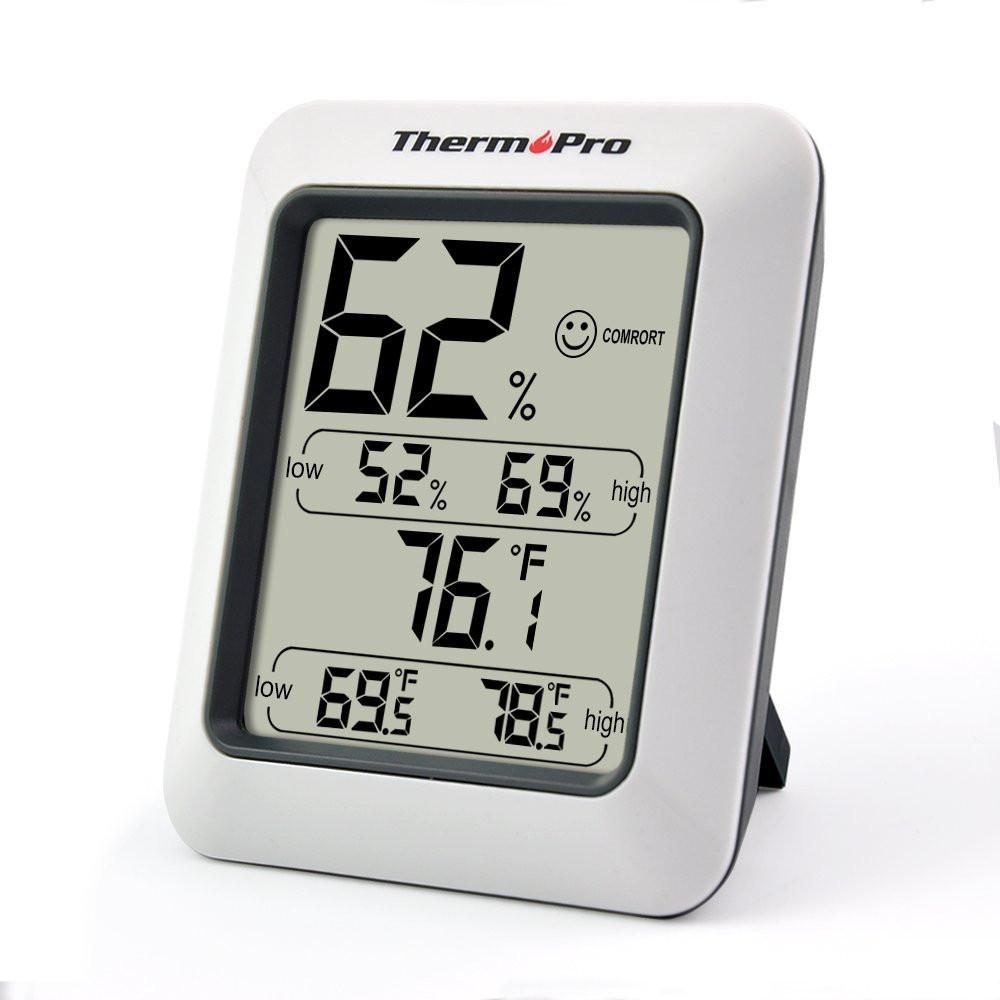Understanding the difference between dry and humid air is important for maintaining a healthy and comfortable living environment in Kenya. The ThermoPro TP 50 is a digital hygrometer designed to help you monitor indoor air conditions with ease. In this article, we will explore how dry and humid air affect your health, home, and comfort, and how using the ThermoPro TP 50 can help you strike the right balance.
1. Understanding dry air and its effects
What causes dry air
Dry air occurs when the humidity level in your environment is too low. This usually happens during hot seasons, especially in regions like Nairobi or Nakuru, where temperatures can rise sharply during the day but drop at night. Lack of rainfall or the use of indoor heating systems can also contribute to dryness.
Effects of dry air on your body
Dry air can lead to a range of discomforts. These include:
- Dry skin, chapped lips, and irritated eyes
- Sore throats and sinus issues
- Increased static electricity
- Breathing difficulties, especially for people with asthma or allergies
Because moisture in the air helps keep your respiratory tract moist, very dry air can make you feel more tired or congested.
Effects on your home
Dry air can also damage wooden furniture, cause paint to crack, and warp door frames. Over time, this may reduce the overall value of your home. By monitoring humidity levels with the ThermoPro TP 50, you can protect both your health and your belongings.
2. Exploring humid air and its challenges
What causes humid air
Humid air is common in coastal areas like Mombasa, or during Kenya’s rainy season. It occurs when there is too much moisture in the air, with humidity levels going above 60 percent.
Effects of humid air on health
High humidity makes it harder for sweat to evaporate. As a result, your body struggles to cool down. You may feel sticky or uncomfortable, even when sitting still. This environment also encourages:
- Mold and mildew growth
- Skin rashes or heat-related illnesses
- Difficulty sleeping due to poor air circulation
- Aggravated respiratory conditions
Clearly, both dry and humid air have their own set of problems. That’s why it is important to keep your indoor humidity within a healthy range, ideally between 40 to 60 percent.
Effects on your home
Too much humidity can cause walls to develop mold patches, especially in poorly ventilated spaces like bathrooms or store rooms. Fabric furniture and carpets can also trap moisture, leading to musty smells and the growth of bacteria.
3. Why monitoring indoor air matters
Finding the balance
Kenyan weather varies widely from place to place. For instance, someone in Eldoret may experience cooler, drier air, while someone in Kisumu might have to deal with constant humidity. Because of this, understanding the difference between dry and humid air in your local area is crucial.
How ThermoPro TP 50 helps
The ThermoPro TP 50 is a compact and easy-to-use device that gives you accurate readings of both temperature and humidity. With its clear display and fast response time, you can know exactly what the air in your room feels like.
Some key features include:
- A humidity and temperature monitor with daily high and low readings
- An easy-to-read screen that updates every 10 seconds
- A comfort indicator that tells you if the air is dry, comfortable, or humid
- A stand and magnetic back, so you can place it anywhere you need
With this device, you can take action immediately when air conditions are out of range. For instance, you can turn on a humidifier in dry weather or a dehumidifier during wet seasons.
4. Improving your indoor air quality
Simple ways to deal with dry air
If you discover that your air is too dry, consider:
- Adding a bowl of water near heat sources to increase moisture
- Using indoor plants to naturally raise humidity
- Running a humidifier in key rooms like bedrooms or baby nurseries
The ThermoPro TP 50 will help you track your progress and ensure your efforts are working.
How to reduce humidity indoors
To lower indoor humidity levels, you can:
- Open windows to increase ventilation
- Use fans to circulate air
- Place moisture-absorbing materials like charcoal or silica gel in closets
- Run a dehumidifier or air conditioner
Once again, the ThermoPro TP 50 keeps you informed so you never have to guess. You will know when the room feels just right, and you can relax knowing your home is healthier.
The difference between dry and humid air can make a big impact on your daily comfort and health. Whether you live in a dry region or a humid one, keeping track of your indoor climate is essential. The ThermoPro TP 50 offers a reliable and affordable way to monitor your home’s temperature and humidity, helping you create the perfect indoor environment.
Order yours today from thermopro.co.ke or call us on 0705493889. Your comfort, health, and peace of mind are just a few clicks away.

